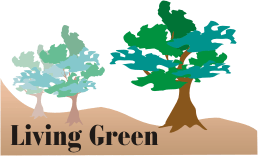 What is Living Green?
What is Living Green?
Living Green – Building Natural & Green – Cleaning the Green Way
Passive Solar – Reduce, Reuse, & Recycle
Videos: Building Green Straw-bale Home Hydroponics
What is Living Green?
Living Green, is basically making decisions considering the impact that decision would
have on the environment. Living Green is making choices that are good for the earth.
Ideas for Living Green:
1. Reduce energy and use renewable sources such as:
• Well-insulated homes, passive and active solar systems, and buying green energy
• Working and playing near home
• Annually tune-up of your heating & cooling system to improve efficiency and comfort
• Clean or replace filters monthly or as needed.
• Install a programmable thermostat and to cut your heating & AC bills.
Use this handy online energy estimator
2. Conserve and protect water
• Water-conserving home toilets, fixtures and appliances
• Water-conserving landscaping and native plants
3. Be aware of toxins and use
• Nontoxic cleaning products and pest control
• Water-based and low-solvent paints
4. Use products derived from plants
• E-85 and biodiesel fuels
• Office furniture made from waste plant material
• 100% natural fiber fabrics like cotton or linen
5. Buy locally grown, sustainable products, such as:
• Organic food and cotton
• Buy vegetables from local farmers markets
6. Buy products that have minimal packaging
• Bulk purchasing
• Packaging that uses biodegradable materials
7. Buy products that are durable, reused, such as:
• Canvas shopping bags
• Salvaged building materials
• Reconditioned electronics
8. Buy products that contain recycled material such as:
• Decking made from recycled plastic and wood scraps
• Post-consumer recycled paper and other products
• Carpet made from recycled plastic
9. Be aware of energy usage at home
• Turn off lights when not in uses (i.e. when leaving a room)
• Turn down your thermostat in the winter and up in the summer
• Use compact fluorescent light bulbs.
• Close blinds or shades on the south and west facing windows during the day,
• Install trellises or awnings to avoid heat build-up south and west facing windows.
10. Become socially responsible by
• buying products made without sweatshop, child, or slave labor
• paying a living wages paid to producers under a fair-trade label
• investments in and/or making purchases from socially responsible companies
Please suggest additional links
Living Green Links
Buy Water Filters replacement water filter cartridges, and home water filters from the
leading brands including Culligan, Ametek, Samsung, Pur, Brita, Pentek, GE, and USFilter.
UK Energy Saving – The UK Energy Saving website gives information and tips on ways to save energy and also how to save money on household bills.
The Natural Step: Since 1988, The Natural Step has worked to accelerate global sustainability by guiding companies, communities and governments onto an ecologically, socially and economically sustainable path. More than 70 people in eleven countries work with an international network of sustainability experts, scientists ,universities, and businesses to create solutions, innovative models and tools that will lead the transition to a sustainable future.
Chatter Creek Mountain Lodge Construction: Photo journal of mountain lodge construction at Chatter Creek, deep in the Canadian Rocky Mountains. Follow the impossible task of building a 9300 sq. ft log building in one short summer. Editor’s note–we at Otherpower.com thought we lived in a remote area until we read this web log. Wow!
Does the Solid Waste Management Hierarchy Make Sense?: A Technical, Economic & Environmental Justification for the Priority of Source Reduction and Recycling – John Schall, October, 1992
Ten Actions for Living Green: Ready to make choices and take action to live a more sustainable life, 365 days a year? Here are some Living Green 365 tips to get you started!
Society For Conservation GIS: The SCB is an international professional organization dedicated to promoting the scientific study of the phenomena that affect the maintenance, loss, and restoration of biological diversity. The Society’s membership comprises people in the conservation and study of biological diversity: resource managers, educators, government and private conservation workers, and students.
More Living Green Links
